Timber framing, an ancient and enduring method of construction, has seen a resurgence in popularity due to its sustainable nature and aesthetic appeal. This article aims to provide an overview of timber framing as it pertains to wood production and engineering. Through examining the case study of a hypothetical residential project utilizing timber framing techniques, this article will explore the various aspects involved in the process, including sourcing quality timber, understanding structural principles, and implementing effective engineering strategies.
In recent years, there has been a growing interest in using timber frames for contemporary architectural designs. One notable example is the hypothetical construction of a modern eco-friendly house nestled amidst a lush forest landscape. The utilization of timber framing not only ensures minimal impact on the surrounding environment but also adds character and warmth to the overall design. By delving into this case study scenario, we can gain insights into the intricate processes involved in wood production for timber framing projects, along with the scientific principles that govern their structural stability and longevity. Furthermore, by exploring how engineers leverage technology and innovative techniques within this context, we can appreciate the meticulous planning required to ensure successful construction outcomes while maintaining sustainability goals.
The History of Timber Framing
Timber framing has a rich and fascinating history that dates back centuries. One notable example is the construction of the Horyuji Temple in Japan, which was built in the 7th century using traditional timber framing techniques. This iconic structure stands as a testament to the durability and longevity of timber-framed buildings.
To fully appreciate the significance of timber framing, it is important to understand its evolution over time. Throughout history, civilizations around the world have utilized this construction method for various reasons, including structural stability, cultural traditions, and resource availability.
One key aspect of timber framing’s historical importance lies in its versatility. The use of wooden beams allowed for flexible design possibilities, enabling architects and engineers to create intricate structures with impressive load-bearing capabilities. Not only did these buildings serve functional purposes such as dwellings or places of worship, but they also often showcased artistic craftsmanship through their intricate joinery details.
The enduring legacy of timber framing can be seen in the lasting impact it has had on architectural practices today. While modern construction methods have evolved significantly, many builders still draw inspiration from traditional timber framing techniques when designing contemporary structures.
- Emphasizes natural materials
- Promotes sustainable building practices
- Offers aesthetic appeal
- Provides a sense of connection with nature
| Advantages | Disadvantages | Considerations |
|---|---|---|
| Durability | Costly | Material sourcing |
| Energy efficiency | Limited design flexibility | Structural engineering requirements |
| Ease of maintenance | Time-consuming construction process | Preservation efforts |
As we delve deeper into our exploration of timber framing, we will now shift our focus towards understanding the different types of timber used in this age-old practice. By examining these specific wood varieties and their unique characteristics, we gain valuable insights into how they contribute to both the functionality and aesthetics of timber-framed structures.
Types of Timber Used in Framing
From the early days of human civilization, timber framing has been a prevalent construction technique due to its strength and durability. In this section, we will explore the different types of timber used in framing structures, highlighting their unique properties and applications.
Before delving into the specifics of various timbers, let us consider an example that showcases the significance of selecting the right type of wood for timber framing. Imagine a builder tasked with constructing a large commercial building in an area prone to high humidity levels and termites. If they were to use a softwood species such as pine or fir, which are susceptible to moisture damage and insect infestation, it would lead to structural issues over time. However, by opting for a hardwood species like oak or teak, known for their resistance against moisture and pests, the longevity and stability of the structure can be ensured.
When choosing timber for framing purposes, several factors come into play. Here are some key considerations:
- Strength: Different woods possess varying degrees of strength. Some species like Douglas fir and Southern yellow pine offer excellent load-bearing capabilities suitable for heavy-duty applications.
- Durability: Certain timbers exhibit natural resistance to decay and rotting. Examples include cedar and redwood, making them ideal choices when longevity is crucial.
- Cost-effectiveness: While some exotic woods may have desirable qualities, they might not always fit within budget constraints. It is essential to strike a balance between cost and performance without compromising on safety.
- Environmental sustainability: With growing concerns regarding deforestation and environmental impact, using sustainably sourced timbers like bamboo or engineered wood products helps minimize ecological harm.
To further illustrate these considerations, below is a table comparing four commonly used timbers along with their corresponding characteristics:
| Timber Species | Strength | Durability | Cost |
|---|---|---|---|
| Douglas Fir | High | Moderate | Affordable |
| Cedar | Moderate | High | Moderate |
| Oak | High | Very high | Expensive |
| Pine | Moderate | Low | Affordable |
As we can see, the choice of timber ultimately depends on a variety of factors such as budget, location, and desired lifespan. By carefully evaluating these considerations, builders can make informed decisions to ensure the long-term integrity of their timber-framed structures.
Transitioning into the subsequent section about “Traditional Timber Framing Techniques,” it is important to understand how different types of timbers are utilized in these age-old construction methods. Rather than viewing them as mere building materials, traditional timber framing techniques elevate woodcraft to an art form that has withstood the test of time.
Traditional Timber Framing Techniques
Exploring Traditional Timber Framing Techniques
In the previous section, we discussed the various types of timber commonly used in framing. Now, let us delve into the traditional techniques employed in timber framing, which have stood the test of time and continue to inspire modern construction practices.
To illustrate the effectiveness of these techniques, consider a hypothetical scenario where a historic building requires restoration due to structural damage caused by years of neglect. The skilled craftsmen tasked with this project must employ traditional timber framing techniques to ensure that the restored structure maintains its authenticity while also meeting modern safety standards.
Traditional timber framing involves several key elements and methods:
- Joinery: The artful joining of timbers is fundamental to traditional timber framing. Mortise-and-tenon joints, for example, provide strength and stability by interlocking wooden components seamlessly.
- Pegs and Dowels: Instead of relying solely on metal fasteners like nails or screws, wooden pegs or dowels are often utilized to secure joinery connections. This technique not only enhances aesthetics but also allows for natural expansion and contraction during seasonal changes.
- Braces and Trusses: Bracing systems play a vital role in maintaining overall structural integrity. Diagonal braces add rigidity to walls, preventing swaying or sagging over time. Similarly, trusses distribute loads evenly across large spans, reducing stress on individual timbers.
- Scribe Rule Markings: Traditional carpenters utilize scribe rule markings as a precise method for transferring measurements from one timber to another during assembly. This ensures accurate fits between joints and contributes to the overall quality of craftsmanship.
These techniques exemplify the meticulousness required when working with timber frames while embodying an appreciation for both functionality and aesthetics.
| Technique | Purpose | Benefits |
|---|---|---|
| Joinery | Interlocking timbers securely | Increased stability and structural integrity |
| Pegs and Dowels | Securing joinery connections | Enhanced aesthetics, allows for natural movement |
| Braces and Trusses | Reinforcing walls and distributing loads | Improved structural support, reduced stress on timbers |
| Scribe Rule Markings | Ensuring precise fits in assembly | High level of accuracy in craftsmanship |
By embracing these traditional techniques, craftsmen can bring old structures back to life while preserving their historical significance. However, modern timber engineering methods have also emerged that complement the time-tested approaches used in traditional timber framing.
In the subsequent section, we will explore how contemporary practices have expanded upon these foundations to meet evolving construction needs and push the boundaries of what is achievable with wood as a building material.
Modern Timber Engineering Methods
Traditional Timber Framing Techniques have a rich history and continue to be used in various construction projects. However, with advancements in technology and engineering, modern timber framing methods have emerged as viable alternatives. This section will explore some of the key differences between traditional and modern timber engineering techniques.
One example that highlights the evolution of timber framing is the use of computer-aided design (CAD) software in modern timber engineering. With CAD software, engineers can create detailed 3D models of structures, allowing for precise calculations and analysis before construction even begins. This not only improves accuracy but also enhances efficiency in terms of time and materials.
In addition to CAD software, another significant advancement in modern timber engineering is the use of engineered wood products. These include laminated veneer lumber (LVL), glued-laminated timber (glulam), and cross-laminated timber (CLT). Engineered wood products offer enhanced strength, stability, and durability compared to traditional solid wood beams, making them suitable for larger-scale projects.
To further illustrate the shift towards modern timber engineering methods, consider the following bullet points:
- Improved resistance against pests and decay through pressure-treated timbers.
- Increased flexibility in design possibilities due to CNC milling machines.
- Enhanced fire resistance through specialized treatments such as charring or intumescent coatings.
- Reduced environmental impact by utilizing sustainably sourced timber from certified forests.
Emphasizing sustainability has become a crucial aspect of contemporary construction practices. As we transition into the next section on “Sustainability and Timber Framing,” it becomes evident that these technological advancements are closely linked to addressing current environmental concerns while still maintaining the structural integrity required for safe construction projects.
Sustainability and Timber Framing
Transitioning from the previous section on modern timber engineering methods, it is apparent that advancements in technology have greatly influenced the production and engineering of timber framing. This section will delve into the sustainability aspect of timber framing and its implications for construction practices.
To illustrate the practicality of sustainable timber framing, let us consider a hypothetical scenario where a local community center decides to construct an extension using timber frames sourced from sustainably managed forests. By utilizing this approach, they not only ensure minimal environmental impact but also contribute to the preservation of natural resources. Sustainability lies at the core of timber framing, as it embraces renewable materials while minimizing waste generation during both manufacturing and construction processes.
When discussing the benefits of sustainable timber framing, several aspects come into play:
- Environmental Preservation: The use of sustainably harvested wood reduces dependence on non-renewable resources such as concrete or steel, resulting in lower carbon emissions and energy consumption.
- Improved Indoor Air Quality: Wood has been proven to enhance indoor air quality by regulating humidity levels and reducing airborne pollutants.
- Aesthetic Appeal: Timber frames exude warmth and natural beauty, creating visually appealing structures that blend harmoniously with their surroundings.
- Economic Viability: Sustainable forestry practices create jobs within local communities while supporting regional economies.
The following table provides a comparative analysis between traditional construction materials (such as concrete and steel) and sustainable timber framing:
| Aspect | Concrete/Steel Construction | Sustainable Timber Framing |
|---|---|---|
| Carbon Footprint | High | Low |
| Energy Consumption | High | Low |
| Waste Generation | Significant | Minimal |
| Versatility | Limited | High |
It is evident that sustainable timber framing offers numerous advantages over conventional construction methods. However, it is important to acknowledge some potential drawbacks associated with this approach. These include factors like susceptibility to moisture damage if proper maintenance is neglected or limited design options for complex architectural structures. Nonetheless, these drawbacks can be mitigated through proper planning and application of suitable protective measures.
Transitioning into the subsequent section on the benefits and drawbacks of timber framing, it is essential to further explore how this construction technique impacts various aspects of a project’s execution.
Benefits and Drawbacks of Timber Framing
Transitioning from the previous section on sustainability in timber framing, it becomes crucial to examine the benefits and drawbacks associated with this construction method. Understanding these aspects will help stakeholders make informed decisions regarding timber framing projects.
One key benefit of timber framing is its structural integrity and durability. For instance, consider a case study where a commercial building constructed using timber frames has stood strong for over 100 years without any major repairs or modifications. This example highlights how well-constructed timber frames can withstand the test of time and provide long-lasting structures.
When evaluating the advantages and disadvantages of timber framing, several factors come into play:
-
Environmental Impact:
- Positive: Timber is a renewable resource that stores carbon dioxide.
- Negative: Deforestation and improper logging practices can lead to habitat destruction.
-
Cost-effectiveness:
- Positive: Timber frames are often more affordable compared to other construction methods.
- Negative: The initial cost may be higher due to specialized labor requirements.
-
Energy Efficiency:
- Positive: Wood has natural insulating properties, reducing energy consumption for heating and cooling.
- Negative: Poor insulation or lack of air sealing can diminish energy efficiency gains.
-
Aesthetic Appeal:
- Positive: Timber framing provides a unique, warm aesthetic that many find visually pleasing.
- Negative: Some architectural styles may not suit timber framing’s rustic appearance.
| Factors | Positive Aspect | Negative Aspect |
|---|---|---|
| Environmental | Renewable resource | Habitat destruction |
| Impact | Carbon storage | |
| ——————– | ———————————— | ————————————– |
| Cost-effectiveness | Affordability | Initial high costs |
| ——————– | ———————————— | ————————————– |
| Energy Efficiency | Natural insulation properties | Poor insulation or air sealing |
| ——————– | ———————————— | ————————————– |
| Aesthetic Appeal | Unique and warm aesthetic | May not suit certain architectural styles |
In conclusion, timber framing offers several benefits such as structural integrity, environmental advantages, cost-effectiveness, energy efficiency gains, and unique aesthetics. However, it is essential to consider the potential drawbacks associated with deforestation, higher initial costs, insulation issues, and limitations in architectural styles. By carefully weighing these factors against project requirements and priorities, stakeholders can make informed decisions when choosing timber framing as a construction method.

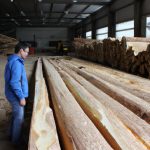
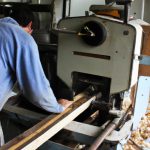
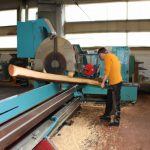

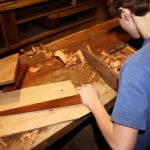

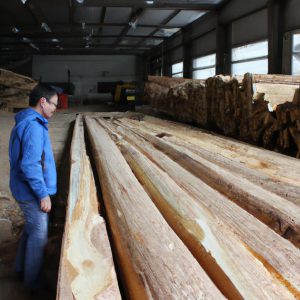
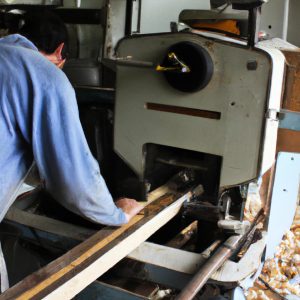
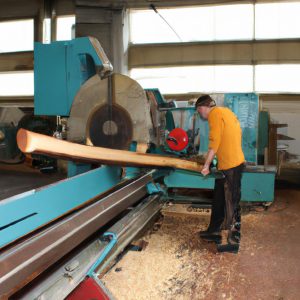
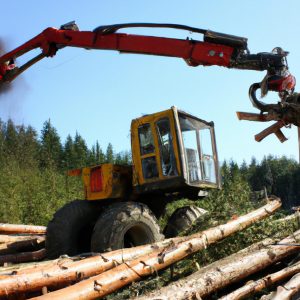
More Stories
Wood Moisture Content Control: A Key Element in Wood Production: Wood Engineering
Wood Engineering: Optimizing Wood Production Efficiency
Sustainable Timber Harvesting for Wood Production: A Guide for Wood Engineering